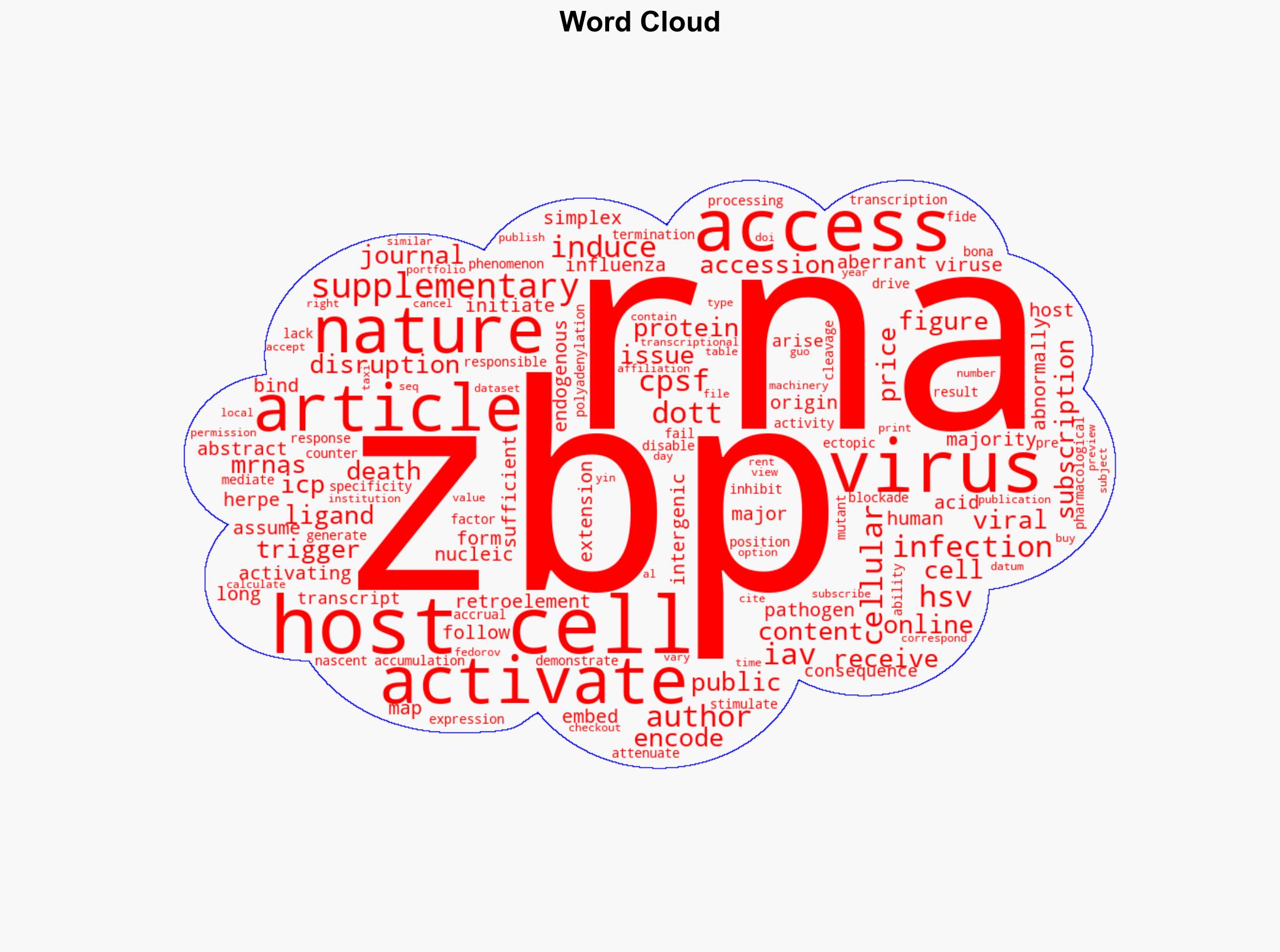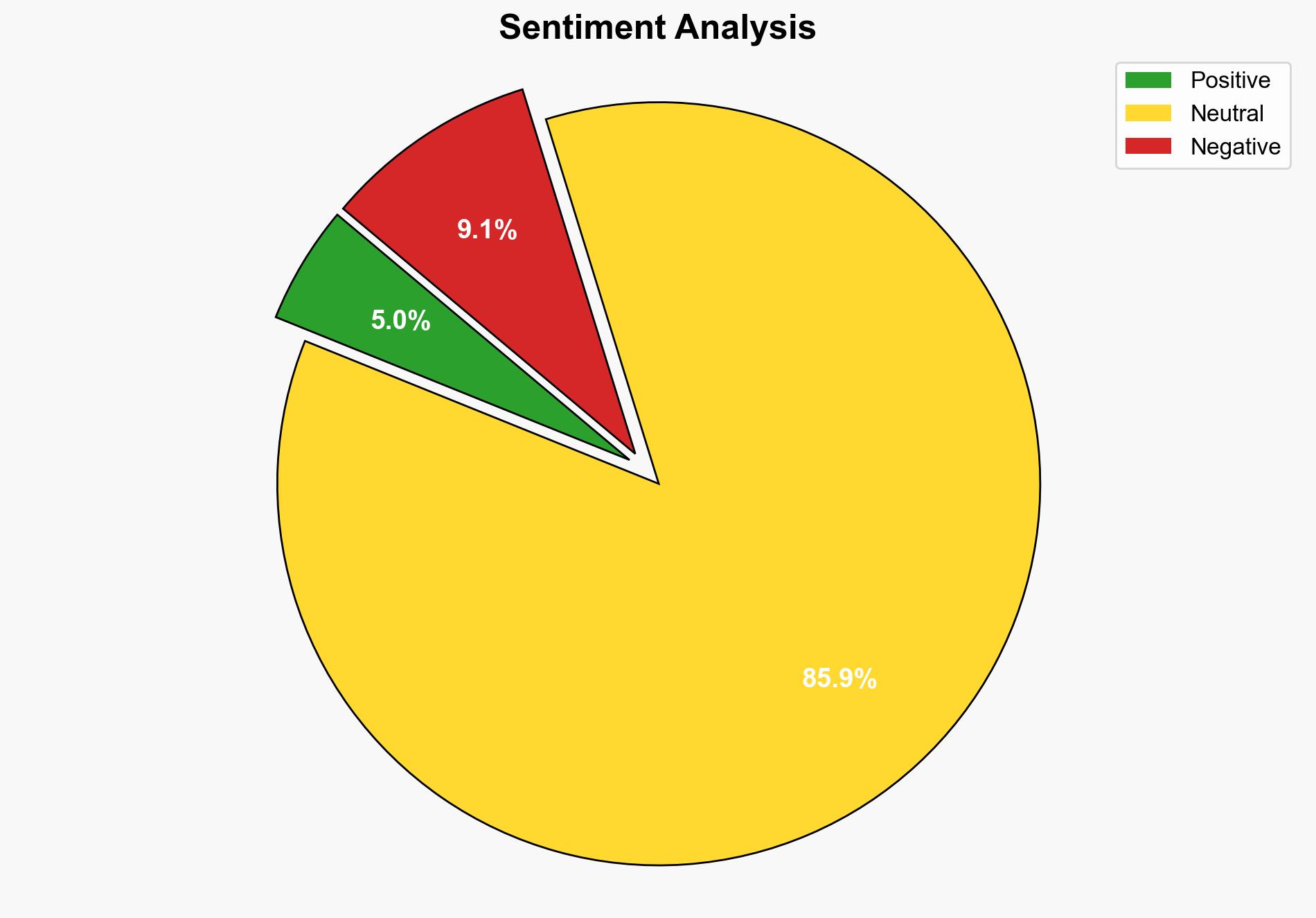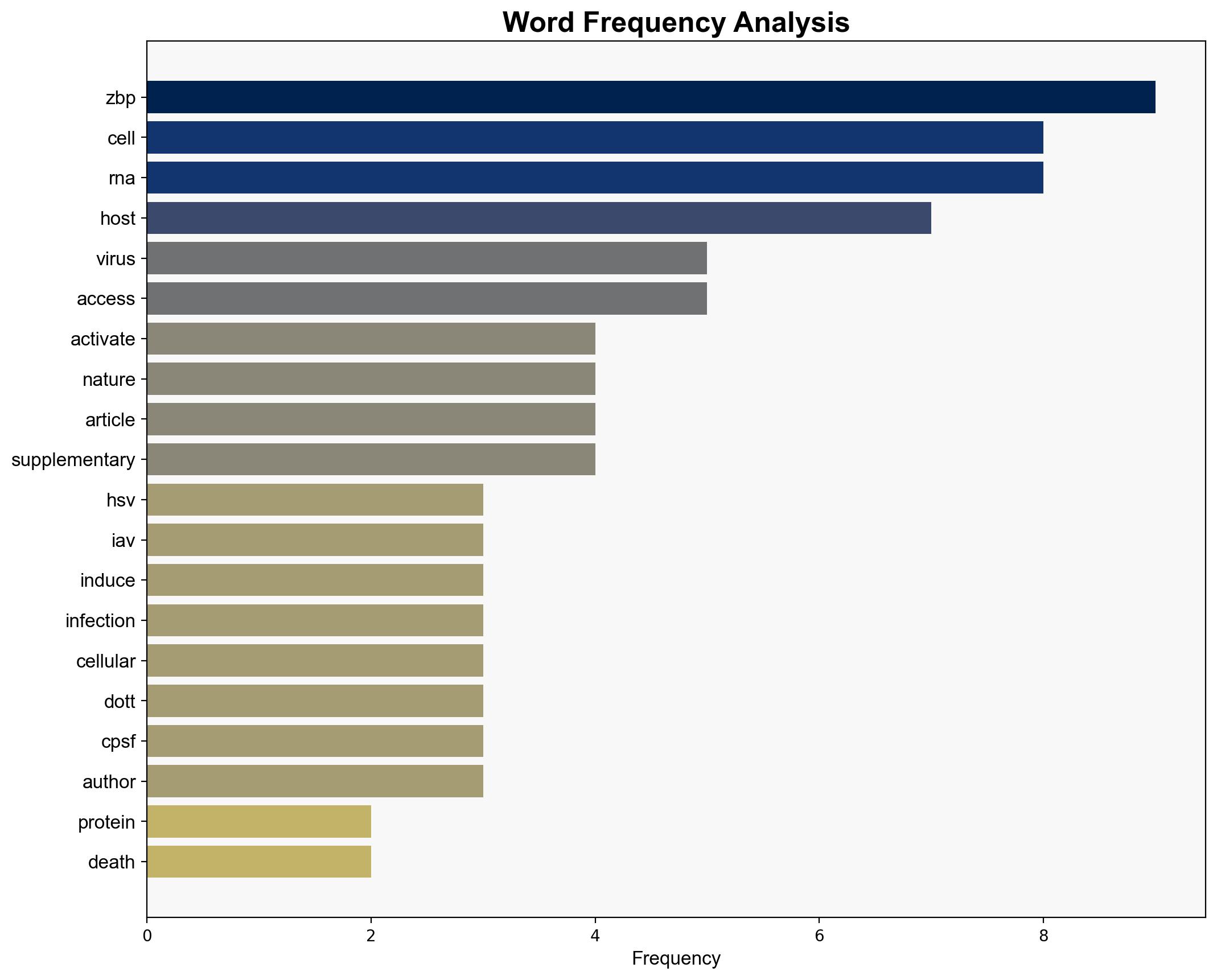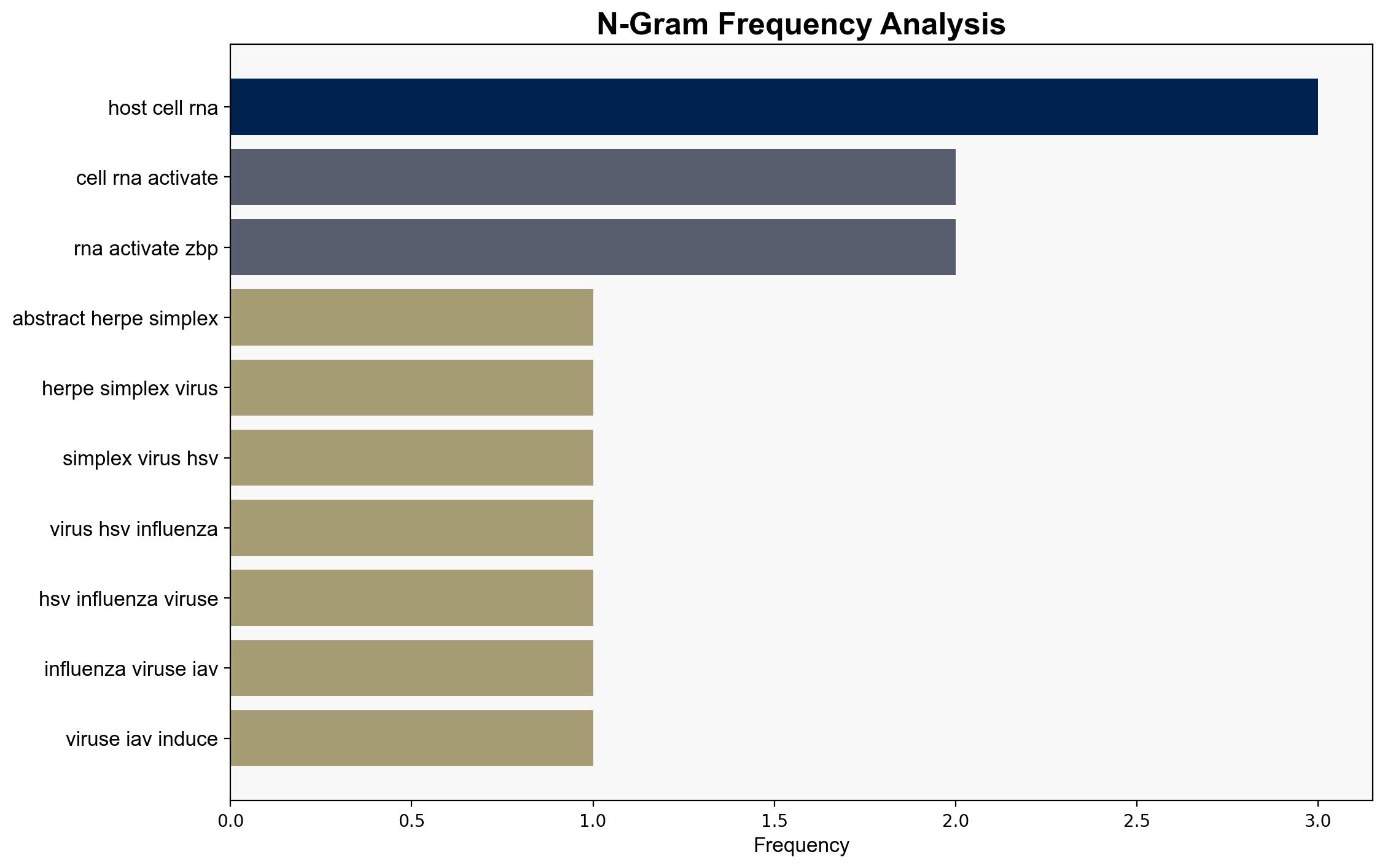Host cell Z-RNAs activate ZBP1 during virus infections – Nature.com
Published on: 2025-10-13
Intelligence Report: Host cell Z-RNAs activate ZBP1 during virus infections – Nature.com
1. BLUF (Bottom Line Up Front)
The most supported hypothesis is that host cell Z-RNAs, rather than viral RNAs, are primarily responsible for activating ZBP1 during viral infections. This conclusion is drawn with moderate confidence due to the structured analysis of the available data. The recommended action is to focus on further research into host cell RNA mechanisms to develop targeted antiviral therapies.
2. Competing Hypotheses
1. **Hypothesis A**: Host cell Z-RNAs are the primary activators of ZBP1 during viral infections, as they are generated due to the disruption of normal transcription processes by viral interference.
2. **Hypothesis B**: Viral RNAs themselves are the main triggers for ZBP1 activation, with host cell RNAs playing a secondary or negligible role.
Using Analysis of Competing Hypotheses (ACH) 2.0, Hypothesis A is better supported. The evidence indicates that the accumulation of host cell RNAs, due to viral disruption of transcription termination, aligns with the observed activation of ZBP1. Hypothesis B is less supported as it does not account for the specific mechanisms by which host cell RNAs are implicated in ZBP1 activation.
3. Key Assumptions and Red Flags
– **Assumptions**: It is assumed that the disruption of transcription termination is a common mechanism across different viral infections. Another assumption is that the observed phenomena in experimental settings accurately reflect in vivo conditions.
– **Red Flags**: The reliance on in vitro data may not fully capture the complexity of in vivo interactions. There is also a potential bias towards interpreting data in a way that supports the host cell RNA hypothesis.
– **Blind Spots**: The role of other cellular factors or pathways in ZBP1 activation has not been fully explored.
4. Implications and Strategic Risks
The findings suggest a novel target for antiviral strategies, focusing on host cell RNA pathways rather than direct viral components. This could lead to the development of broad-spectrum antivirals. However, there is a risk of unintended consequences, such as affecting normal cellular processes. Geopolitically, advancements in antiviral therapies could shift global health dynamics, impacting economic and security landscapes.
5. Recommendations and Outlook
- Conduct further research to validate the role of host cell Z-RNAs in ZBP1 activation across different viral infections.
- Develop targeted therapies that modulate host cell RNA pathways to mitigate viral impacts.
- Scenario Projections:
- Best Case: Successful development of broad-spectrum antivirals with minimal side effects.
- Worst Case: Disruption of essential cellular processes leading to adverse health outcomes.
- Most Likely: Incremental advancements in understanding host-pathogen interactions, leading to improved therapeutic strategies.
6. Key Individuals and Entities
– Yin, Fedorov, Guo: Authors involved in the research study.
7. Thematic Tags
national security threats, cybersecurity, counter-terrorism, regional focus





